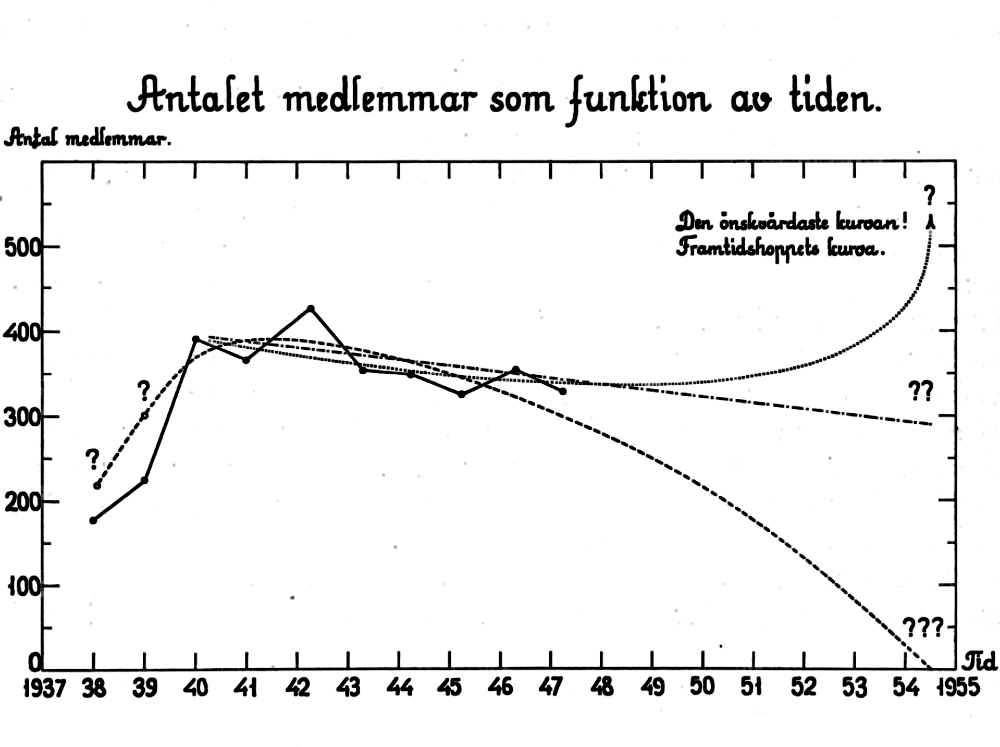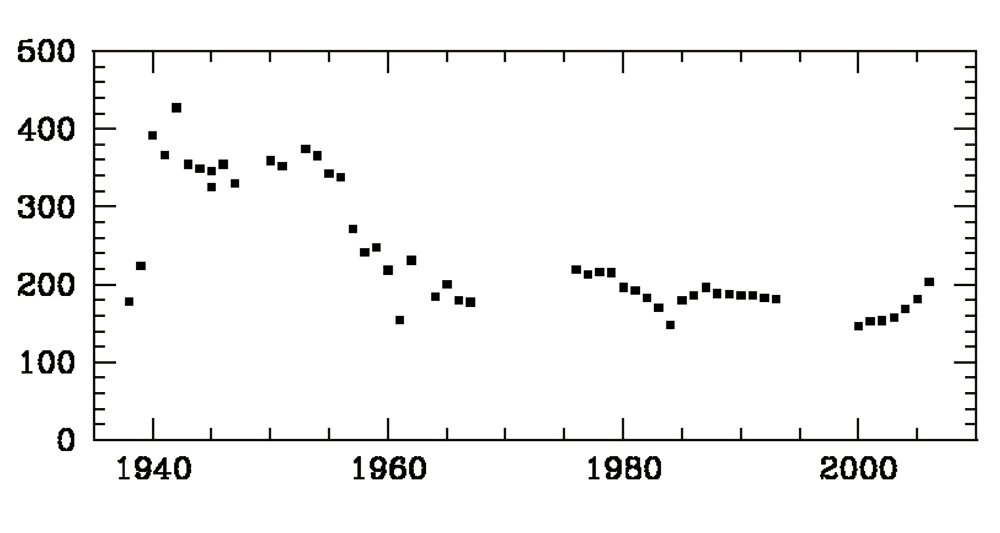The Tycho Brahe Society
|
On April 21, 2007, the Society celebrated its 70th anniversary in Lundmark Hall, Astronomihuset, Lund. It took the form of a one-day seminar about the Society and its founder Professor Knut Lundmark. 58 people participated in the symposium. Parts of the symposium were recorded in a unique video recording (Swedish only).
Short summary of programme
When space was desolate. Some reflections on a radio discussion between Harry Martinson and Knut Lundmark - Anita Sundman, Stockholm Observatory.
|
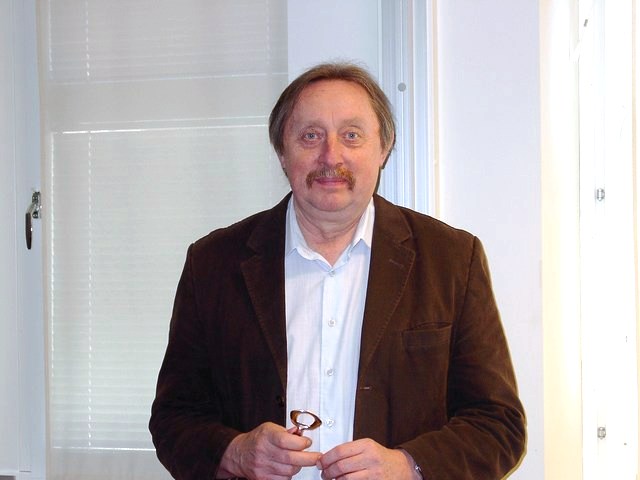 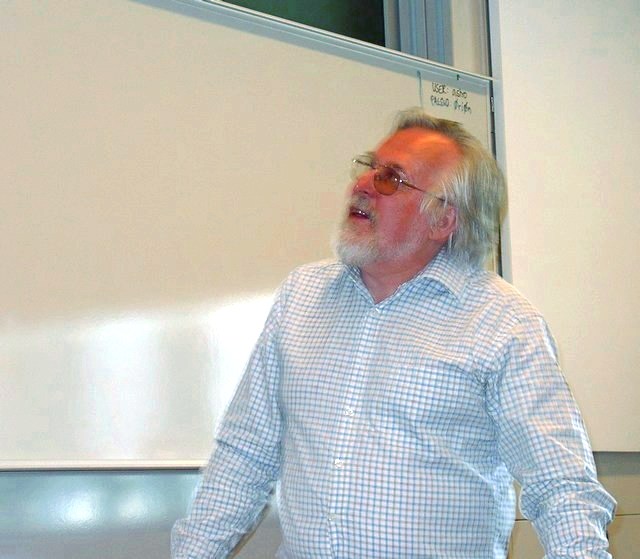 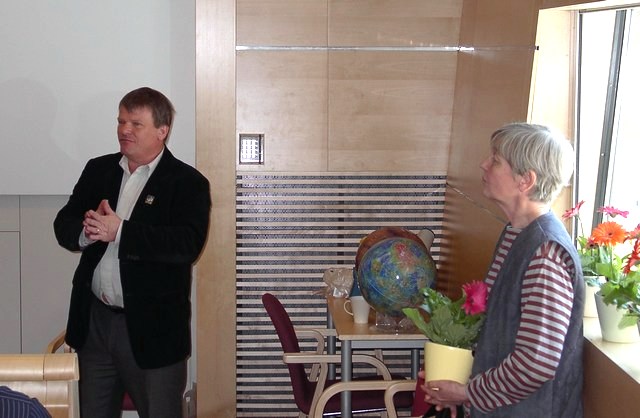 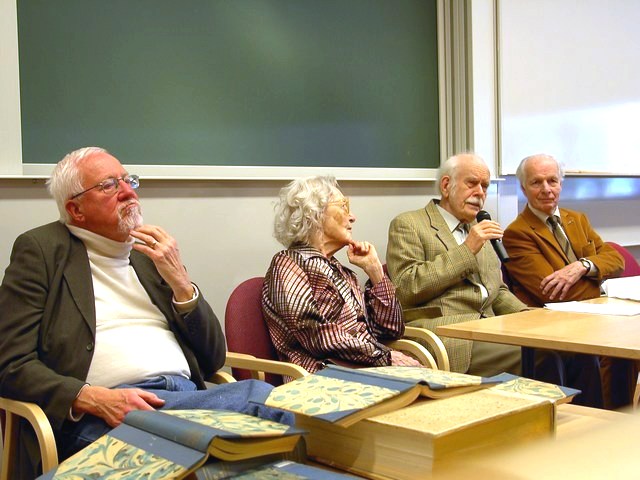  |
Chairmen of the Society:
| 1937 – 39 | Bishop | Edvard Rodhe |
| 1940 – 49 | Principal | Tore Husberg |
| 1950 – 67 | Principal | Helge Bohlin |
| 1968 – 87 | Senior Engineer | Per-Åke Björklund |
| 1988 – 93 | Professor | Gunnar Larsson-Leander |
| 1994 – | Ass. Professor | Peter Linde |
Secretaries of the Society:
| 1937 – 54 | Professor | Knut Lundmark |
| 1955 – 58 | Ass. Professor | Erik Holmberg |
| 1962 | Ass. Professor | Bertil-Anders Lindblad |
| 1963 | Super Intendent | Nils Hansson |
| 1964 – 67 | Ass. Professor | B A Lindblad |
| 1968 – 76 | Ass. Professor | J O Stenflo |
| 1977 – 83 | B.Sc. | Bengt Rönde |
| 1984 – 93 | Colonel | Carl-Axel Reimer |
| 1994 – 02 | M.Sc. | Bengt Rosengren |
| 2003 – 12 | M.Sc | Kjell Werner |
| 2013 – 14 | Göran Iveberg | |
| 2015 – | Mirja Markkula |
.
The society published the yearbook Cassiopeia during the years 1939-1968. It featured many high-quality articles and for a long time, Lundmark himself was the main contributor. The annual book, however, became an increasingly heavy economic burden. From 1969, the members instead received the quarterly Astronomisk Tidsskrift ("Astronomocal Magazine") from the Swedish Astronomical Society. In turn, this has been superceded by Populär Astronomi ("Popular Astronomy"), since No. 3, 2001.
Here are some pages from the very first yearbook, from 1939. Here is a description of how the society came into being (Swedish only).
{component index.php?option=com_flippingbook&view=book&id=7}
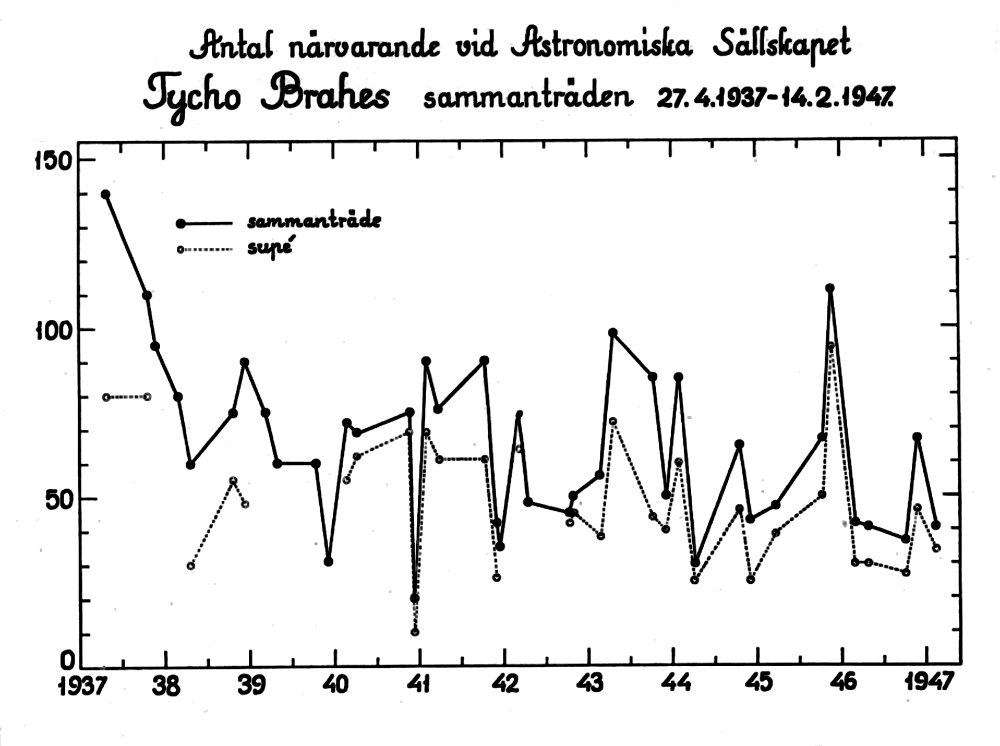
Lundmark's own statistics concerning presence at the meetings (and suppers) during the first ten years.
Lundmark's statistics concerning membership during the first ten years. Note his extrapolated models for expected future development...
The real outcome of membership until 2007. The society evidently was not exterminated in 1955 but has more followed Lundmark's mean model...
Knut Lundmark himself describes the origin of the society:
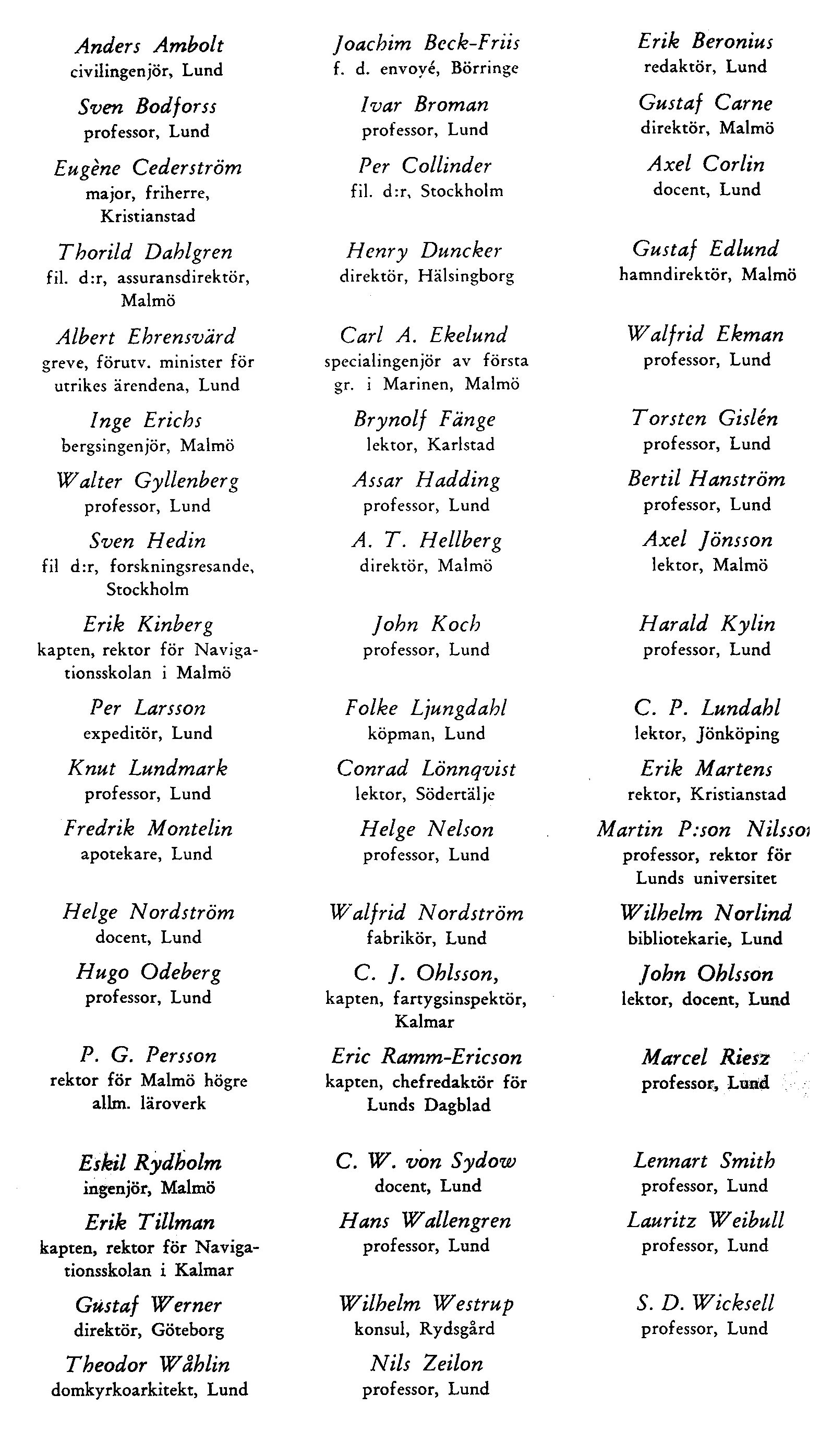 For a number of years there had been discussions in the southern parts of Sweden, particularly in Malmö and Lund, about the need to organise a popular scientific astronomical society. The main reason to found such a society was the strong public interest for astronomy that nowadays exists, and the flowering amateur astronomy that by and large plods on without any real support from the scientific community. The contributions from the amateurs, not least from those here in Scania, have been so many that much would be gained if there was an organisation that could bring the amateurs together and that could alleviate their work by supplying advice and instructions.
For a number of years there had been discussions in the southern parts of Sweden, particularly in Malmö and Lund, about the need to organise a popular scientific astronomical society. The main reason to found such a society was the strong public interest for astronomy that nowadays exists, and the flowering amateur astronomy that by and large plods on without any real support from the scientific community. The contributions from the amateurs, not least from those here in Scania, have been so many that much would be gained if there was an organisation that could bring the amateurs together and that could alleviate their work by supplying advice and instructions.
The great interest for astronomical subjects among the educated public has also manifested itself in the steady flow of letters, writings and questions that are directed to the Lund Observatory. As many of these messages contain valuable observations, it would be highly desirable to centralise these in a popular science society and that this society by using separate amateur sections could organise the amateur work more than has been possible so far.
The need for a popular science society also appeared clearly when the public shows at the observatory of Lund started at the end of the year 1935. During the opening year the observatory had 1200 visitors and during the past year the number of visitors were 802. At these public shows, not only a strong interest for astronomy has been uncovered, but there has also been an outspoken urge for the foundation of an astronomical society.”
Lundmark used his vast contact network and assembled a call for action that a great number of prominent persons signed. To the right we can see who these people were, and below is shown the call that was published in several papers in the southern part of Sweden. Please note that Lundmark, who was the driving force behind both the foundation of the society and its further existence, formally kept himself in the background.
On the 27th of April, 1937 a constituent meeting was held at the Kungsparken restaurant. There were about 140 persons present. Lundmark proposed that " ... as a tribute to one of the greatest sons of Scania and one of the foremost scientists of humanity, the second great reformer of astronomy" the society should be named the Astronomical Society Tycho Brahe.
CALL
regarding the founding of an astronomical society with popular science as an aim. We the undersigned hereby request any and all interested to attend a meeting at the Restaurant Kungsparken in Malmö on the 27th of April at 7 PM in order to constitute an astronomical society with popular science as an aim. For the undersigned the most important task for such a society is to establish, in south Sweden, a congregation of professionals, active or formerly active within astronomy, and all of those seeking knowledge and amateurs, interested in astronomy or in some way desiring to exercise amateur activities.
As far as we understand, such an aim is best achieved by arranging meetings with lectures and discussions on astronomical problems and current issues, briefings about new results from astronomical research, arranging exhibitions of astronomical pictures, maps and interesting prints, and demonstrations of astronomical observatories and of tools used in the astronomical trade.
Lund 21st of April 1937
Edvard Rodhe Fredrik Ramel
Bishop Governor
Lund Malmö



